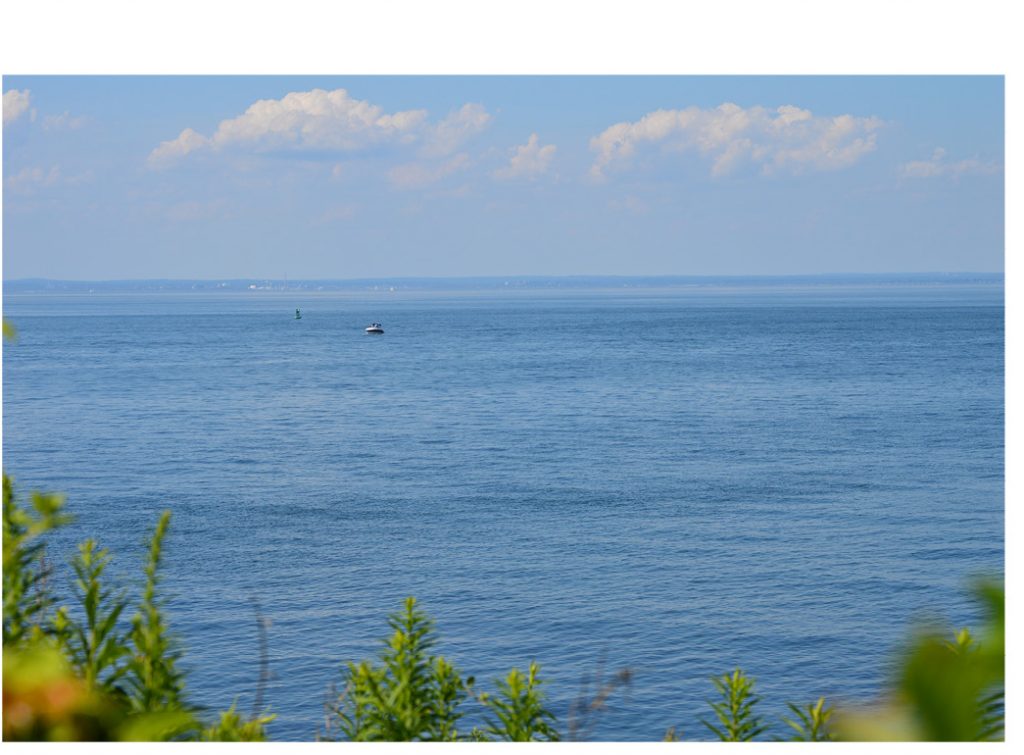
© savethesound.org
Inside the marbled halls of One First Street NE, things were heating up. The Supreme Court session was strolling toward recess, and several of its biggest decisions were still to be handed down—including decisions with profound consequences for the Long Island Sound region. The world outside was already hot.
Washington, D.C. simmered through an early summer heat wave; a week earlier, the city endured its first 100-degree June day since 2012. Daily temperature records dropped across the country. Down in the Caribbean that Friday morning, warm waters were fueling the storm that would become Hurricane Beryl, the earliest Category 5 storm on record.
It was the end of the hottest June in our planet’s history, which followed the hottest May, and the hottest April, and so on, extending a 13-month string of hottest-months-ever. With a broiling world as its backdrop, the Supreme Court issued its ruling on the companion cases of Loper Bright v. Raimondo and Relentless v. Department of Commerce.
At the heart of those cases was a 40-year-old legal doctrine (40 years and three days, to be precise) known as the Chevron deference, a governing principle establishing that in the case of an ambiguous statute with more than one plausible interpretation, the court must defer to the agency in charge. Legal expertise would defer to subject matter expertise in resolving disputes. This is especially important on issues where science should be paramount…such as dealing with all those mounting consequences of climate change and a warming planet.
But the Court overruled Chevron that morning, undermining the regulatory power of agencies—the Environmental Protection Agency, for instance.
It was the second damaging decision to environmental protections in as many days. The day before, in deciding Ohio v. EPA, the Supreme Court halted the Good Neighbor rule, which sought to restrict air pollution created in 23 upwind states from blowing into neighboring states downwind from their power plants and other industrial facilities.
Decisions like those have consequences. Without the protections of the Good Neighbor rule, New York and the New England states will have a harder time meeting air quality standards and protecting their residents from public health threats generated in the Midwest. Cancer, cardiovascular disease, asthma, neurological issues, and low birth weight are among the serious health issues that can result from exposure to ozone pollution.
What’s particularly troubling is that these decisions were not isolated events. They are just the latest blows to environmental protections by a Court with an increasingly worrisome track record.
In May 2023, the Court’s decision in Sackett v. EPA redefined the “Waters of the United States,” which determines the waterbodies protected by the Clean Water Act. The result was to severely limit the EPA’s jurisdiction over wetlands, which aside from providing habitat for fish and wildlife play a vital role in mitigating floods, stabilizing shorelines, and filtering pollutants from stormwater runoff.
In the session prior to that, in West Virginia v. EPA, the Court kneecapped the agency’s authority to regulate and reduce carbon emissions caused by fossil fuel-burning power plants. Three years of damaging decisions have weakened the ability of the Environmental Protection Agency to do its job. And that job isn’t going to get any easier.

The Supreme Court has already announced it will hear another Clean Water Act case in its next term, City and County of San Francisco v. Environmental Protection Agency, in which the EPA’s authority—once again—will be under scrutiny. (This time, it’s the EPA’s ability to address sewage discharges that violate health-based water quality standards—an issue very much at play in New York City and Connecticut municipalities). And in Seven County Infrastructure v. Eagle County, the Court will examine the National Environmental Policy Act, which requires federal agencies to assess the environmental impact of proposed projects and make those findings available to the public.
At a time when storms are becoming more frequent and more severe, when heat waves are getting hotter and lasting longer, when water temperatures continue to rise (it was also the hottest June in recorded history for ocean surface-level temperatures across the globe), weakening federal protections for the environment and public health is devastating. State governments will need to provide and enforce the strongest possible protections, and concerned readers like you—and organizations like us—will need to fight harder than ever for a healthy environment to fill the void created by this string of Supreme Court rulings.
The heat is on. ■
Save the Sound works across the Long Island Sound region to protect the Sound and its rivers, fight climate change, save endangered lands, and work with nature to restore ecosystems. More info at savethesound.org.




